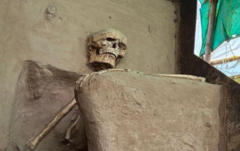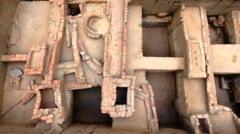A remarkable archaeological find in Vadnagar, India, has left locals and experts bewildered. Buried in a cross-legged position, this ancient skeleton dates back 1,000 years but remains without a proper museum to call home. Unearthed by archaeologist Abhijit Ambekar in 2019, it has been placed in a makeshift tent for six years while officials debate over who should display it.
Ambekar, who leads the Archaeological Survey of India (ASI) division in Mumbai, emphasizes the skeleton's relevance in understanding India's past, particularly the Solanki period, a dynasty that ruled Gujarat from 940 to 1300 CE. The skeleton, which might illuminate historical burial practices, is currently stored in tarpaulin, susceptible to weather elements, even as a state-of-the-art Archaeological Experiential Museum nearby proudly showcases other artifacts.
While almost all items unearthed from Vadnagar have found homes in local museums, the skeleton's bureaucratic battle continues. Authorities claim improper procedures hinder its placement, leaving many in the community anxious about its preservation. The local response has been mixed; some believe the skeleton could attract tourists, while others voice concerns over its neglect.
As discussions about transferring the remains into a proper storied facility continue, many hope that delays due to "red tape" will soon be behind them. The urgency underscores a desire for the ancient skeleton to receive the respect and attention it deserves in the historic town of Vadnagar.





















